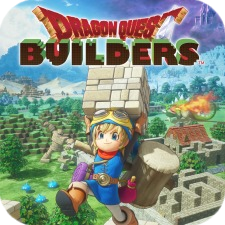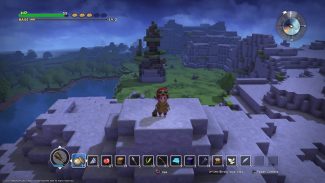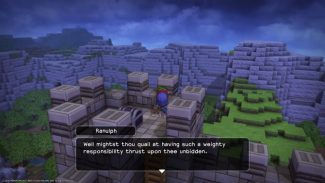Bastion
LQ: 9.15
Recommended Age: 10+
Skills Used: Planning, Working Memory, Mathematics, Reading

Dragon Quest Builders is a spinoff of the classic Dragon Quest video games, set amidst the forests and mountains of its original world of Alefgard. Offered as an alternate ending to the original game, the world is now ruled by monsters and players must gather material and rebuild Alefgard on a grid system similar to Minecraft. Like Minecraft, players must eat food regularly to stay alive. Unlike Minecraft, users’ buildings have levels based on their complexity and how long they’ve endured. Gameplay is divided into four chapters, with each chapter focusing on the reconstruction of a different city in Alefgard. Players don’t need to be acquainted with the series to enjoy Dragon Quest Builders, though parents who enjoyed earlier Dragon Quest games might be particularly keen to enjoy this installment with their children (which we recommend highly — this Playbook will guide you). Dragon Quest Builders is rated E10+ for occasional mild language, violence, the presence of alcohol, and suggestive themes, though gameplay is generally wholesome. Parents should also consider their child’s reading skill, as there is no spoken dialogue or directions. We recommend Dragon Quest Builders for kids 10 and older with a 3rd grade reading level or higher.

Developing a systematic approach for setting and achieving goals.
The sandbox elements in Dragon Quest Builders can be compared to Minecraft, and they allow players something we refer to as digital freeplay. Just because kids are creating from their imagination, however, doesn’t mean they aren’t using the planning thinking skill. Thinking about a structure a player wants to build, what kinds of materials they will need, and what they already have in their inventory, are all important aspects of the planning process. Players can also make use of building blueprints they acquire throughout the game. Though these blueprints take most of the in-game planning out a player’s hands, they reinforce an important aspect of the real-world process -- a drawn or written plan.
Arranging and coordinating materials in order to complete a task.

Organization skills are exercised in any game with a sizeable inventory, but they are particularly stretched in Dragon Quest Builders. As with most games, players begin collecting items almost immediately, and they appear in an inventory bar at the bottom of the screen. Unlike some games where players have tight storage space and must pick and choose which items are most valuable, Dragon Quest Builders enables players to craft massive storage chests. Though this means less of the prioritization practice that accompanies a small inventory, it can be even more challenging to keep track of items when storage space is virtually limitless. Players will also find that items disappear from their inventory as they transition from chapter to chapter, forcing them to re-examine and rearrange items in storage periodically.
Recalling and retaining information in our minds while working.
Dragon Quest Builders is unique in that it blends a sandbox building game that is very much like Minecraft with RPG elements that are reminiscent of The Legend of Zelda. This combination couldn’t be better for exercising the working memory thinking skill. As heroes travel through Alefgard, they’ll encounter villagers who need help. Players will need to keep in mind what a quest-giver has asked them to do -- fetch a torch or rebuild a wall -- as they work to complete each quest.
 Another thing that sets Dragon Quest Builders apart in the Minecraft-style building genre is the use of blueprints. When players place these building plans, a footprint of the building is created on the ground. Players must build the structure to the specifications in the blueprint, and they can access a 3D model to go by to make sure they are on track. This constant referencing from blueprint to actual structure is excellent working memory practice. Where does the door go? How many blocks high are the walls? Where does this desk go? And what about the chest?
Another thing that sets Dragon Quest Builders apart in the Minecraft-style building genre is the use of blueprints. When players place these building plans, a footprint of the building is created on the ground. Players must build the structure to the specifications in the blueprint, and they can access a 3D model to go by to make sure they are on track. This constant referencing from blueprint to actual structure is excellent working memory practice. Where does the door go? How many blocks high are the walls? Where does this desk go? And what about the chest?
Additionally, because none of the dialogue is spoken aloud, players read to understand what is going on and what is asked of them. Reading practices working memory on a very basic level, as readers must remember what has come before in a text in order to glean information and make larger connections.
All membership plans come with full access to our entire suite of tools learning guides, and resources. Here are a few of the ones we think you’ll like the most: